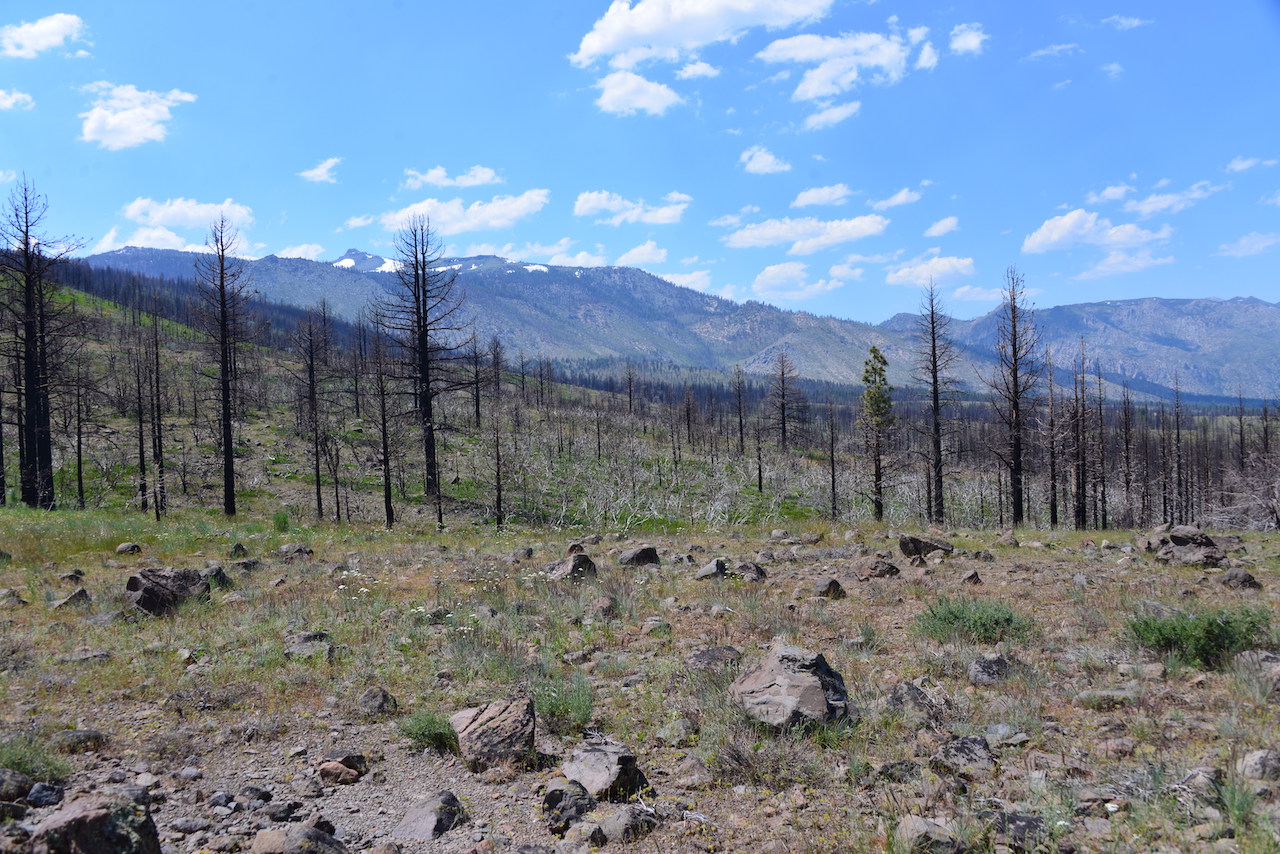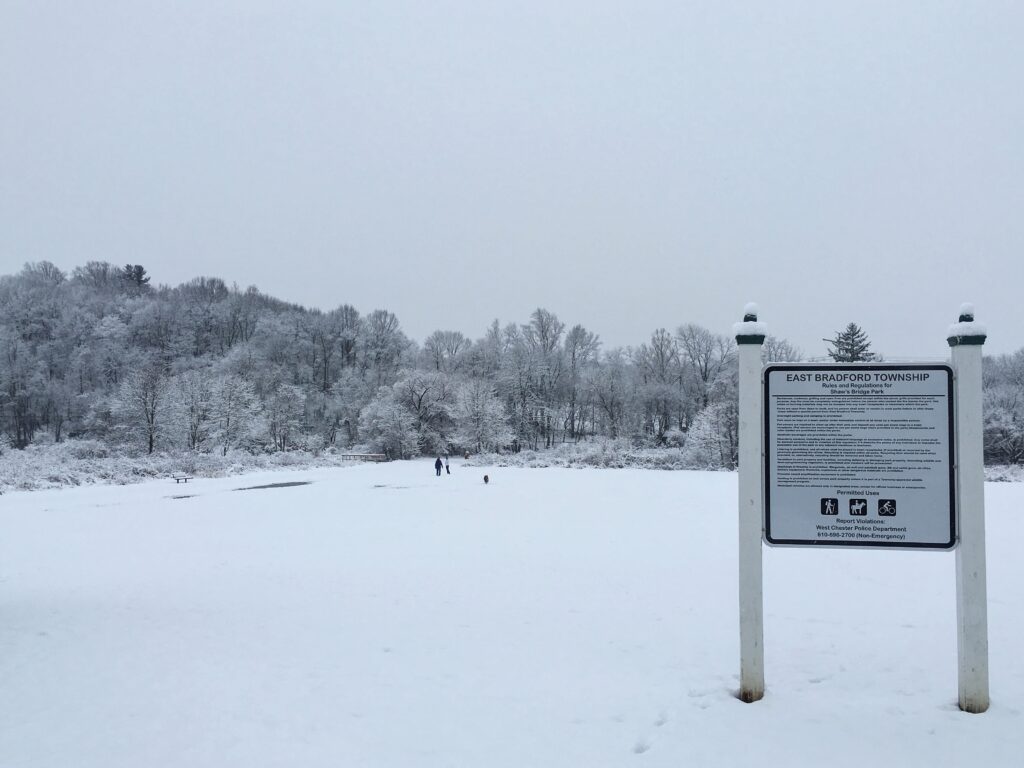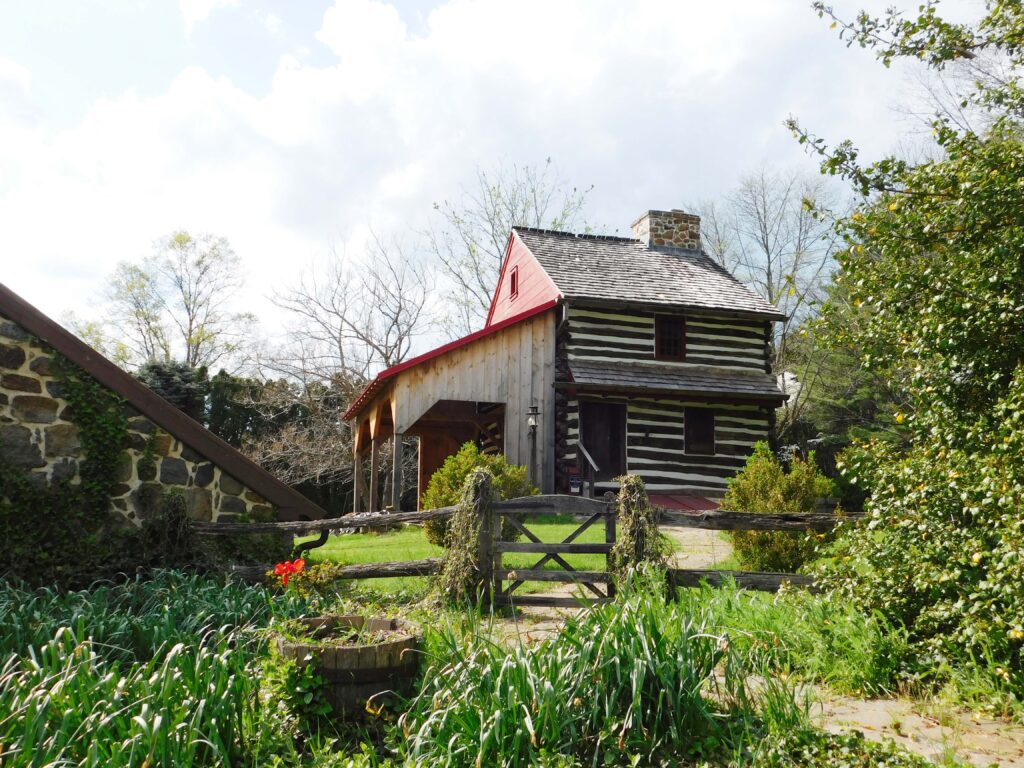A wildfire sparked by lightning started in the Sierra Nevada Mountains. Soon, the high summer winds drove the fire into the hills and valleys where it was fueled by a mix of dry grasses, timber, and parched conditions. The wildfire threatened everything in its path.
The infamous Tamarack Fire of 2021 burned for several weeks and charred more than 68,000 acres of trees and brush. Thousands of residents were forced to evacuate, dozens of homes were destroyed, and forests were leveled.
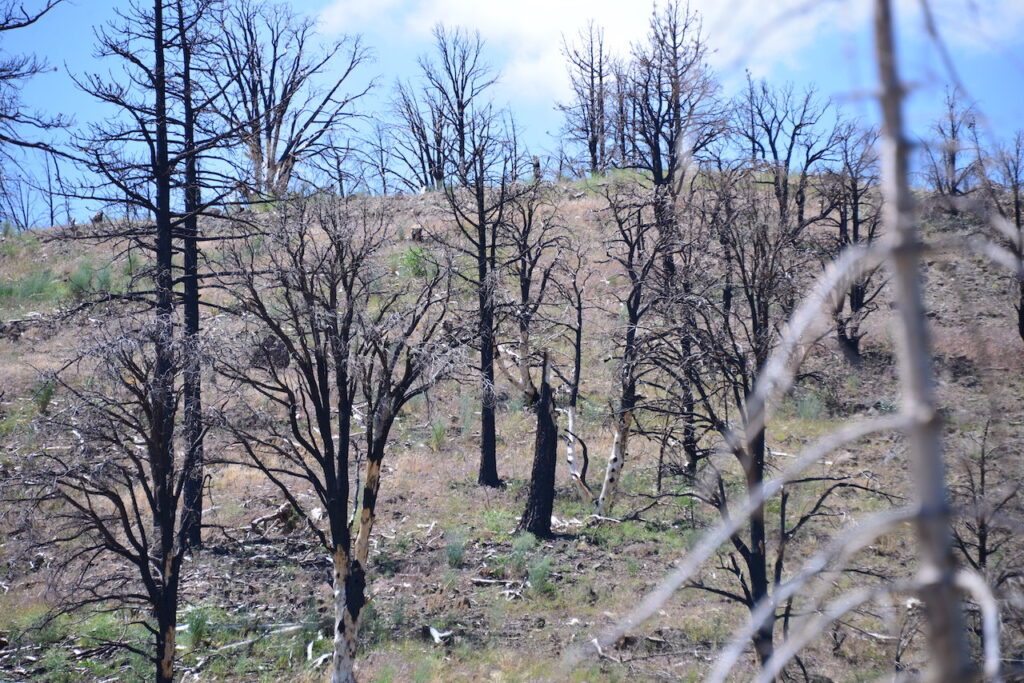
The small town of Markleeville, California, was in the crosshairs of the raging wildfire. The community was evacuated, but luckily the town survived with minimal damage.
The North American Land Trust holds a 557-acre conservation easement near Markleeville in Alpine County. If you go there today, you can see the devastation caused by the wildfire in the charred trees on the surrounding hillsides.
The good news is that the land is healing. One factor in the healing process is a reforestation project being conducted by Nevada Environmental Consulting, LLC. The company specializes in post-wildfire restoration, including removing potential wildfire fuel sources and planting trees, grasses and flowers native to the local environment.
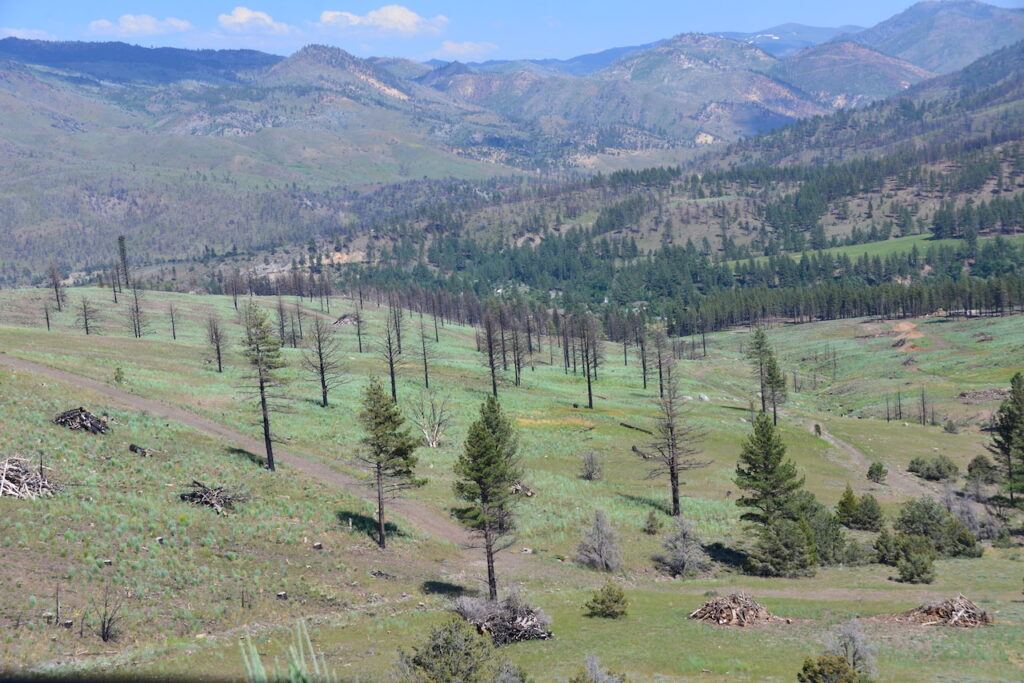
Matthew Setty, a biologist and co-owner of the firm, said his team of loggers and environmental scientists in late 2021 began working on approximately 800 acres of land, which includes much of the NALT conservation easement. The first job was to remove the burnt and dead wood from the fire area, reducing the amount of potential fuel for new wildfires.
Setty said they were able to salvage some of the wood for commercial purposes. However, most of the wood was chipped into mulch and spread across the property to help retain soil moisture. Some of the bigger pieces of wood will eventually be burned in a controlled fire.

The removal of potential fuel sources will help with the forest restoration. It will allow foresters to enter the property when it is time to plant new trees. It will also reduce the fuel sources and severity of any future wildfires, protecting lives and homes.
“The long-term goal is to establish the foundations for resilient forest growth in the future,” Setty said. “We are trying to restart a healthy ecology after a fire.”
After the removal of potential fuel, the Nevada Environmental Consulting team began an aerial seeding program designed to reintroduce grasses, flowers, and brush to the charred landscape. The team used a helicopter to spread approximately 13,000 pounds of seed mix over the 800 acres, which consisted of 12 species of native grasses, forbs, and brush wildflower species.
The helicopter was equipped with a 600-pound seed hopper and specialized software, which was calibrated to changes in speed, to ensure the seed covered the terrain evenly. The helicopter flew nearly 60 miles per hour at 150-200 feet above the ground, spreading the seed mix over 80-foot swaths.
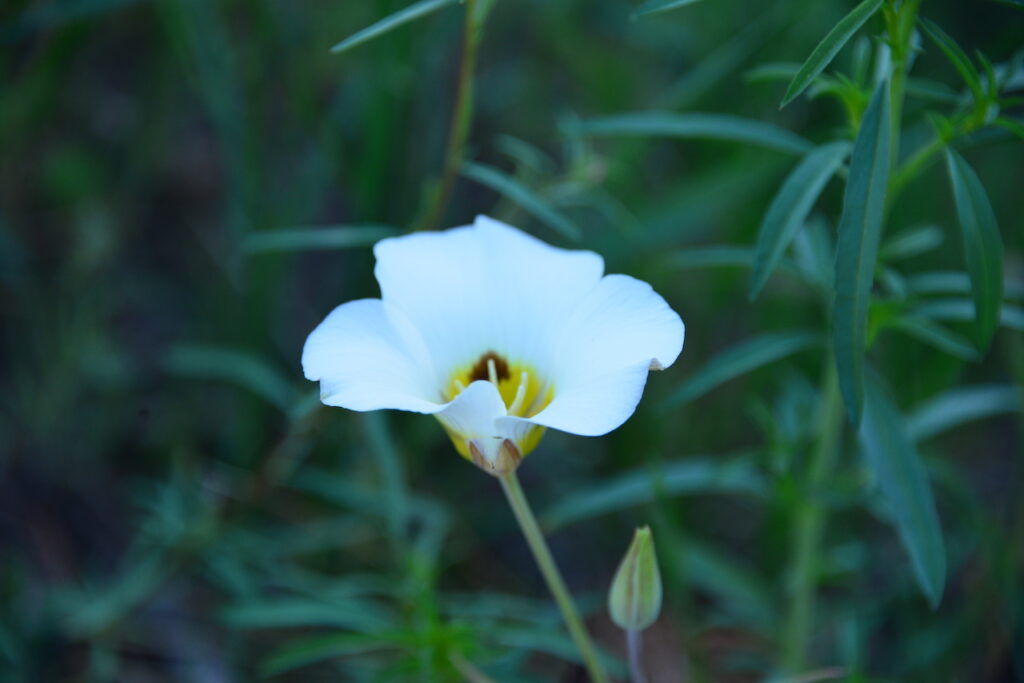
NALT Environmental Scientist Wyatt Moyer recently visited the conservation area as part of NALT’s monitoring and stewardship program. He noted that flowers, grasses and brush are growing on the previously charred ground. These kinds of plants make up an important part of the habitat for wildlife species in the region.
“It was incredible to see how the landscape has rebounded since the fire in 2021,” Moyer said. “The restoration efforts by Nevada Environmental Consulting are truly astonishing. The aerial seeding across the rugged landscapes is proving to be effective.”
The Markleeville conservation area is surrounded by public land managed by the federal Bureau of Land Management to the north and the U.S. Forest Service to the west. It is also near the 6.3 million-acre Humboldt-Toiyabe National Forest.
Following the aerial seeding, the Nevada Environmental Consulting team began the reforestation process on the property. To date, the team has hand-planted approximately 34,000 trees including approximately 26,000 trees on the NALT conservation area. The species of trees being planted include: Jeffrey Pine, California incense cedar, white fir, ponderosa pine, and sugar pine.

The environmental scientists are being assisted by student interns from the environmental and forestry programs at the University of Nevada. The students are helping with conducting survivability studies on the saplings, vegetative regrowth, and erosion control. The first-year data indicates that the wet winter has resulted in a 80 percent or better survival rate for the newly planted trees.
Setty said the majority of the cost of the forest reclamation projects comes from federal grants. However, a significant portion, as much as 25 percent, comes from private land owners. Setty credits those land owners for their commitment to conservation.
“It takes unique individuals to put up the money needed to establish a resilient forest,” Setty said. “It is incumbent on landowners to invest in these ecological improvements.”
###
One of our environmental scientists, Wyatt Moyer, shot this video of the NALT conservation area on his recent stewardship trip.

